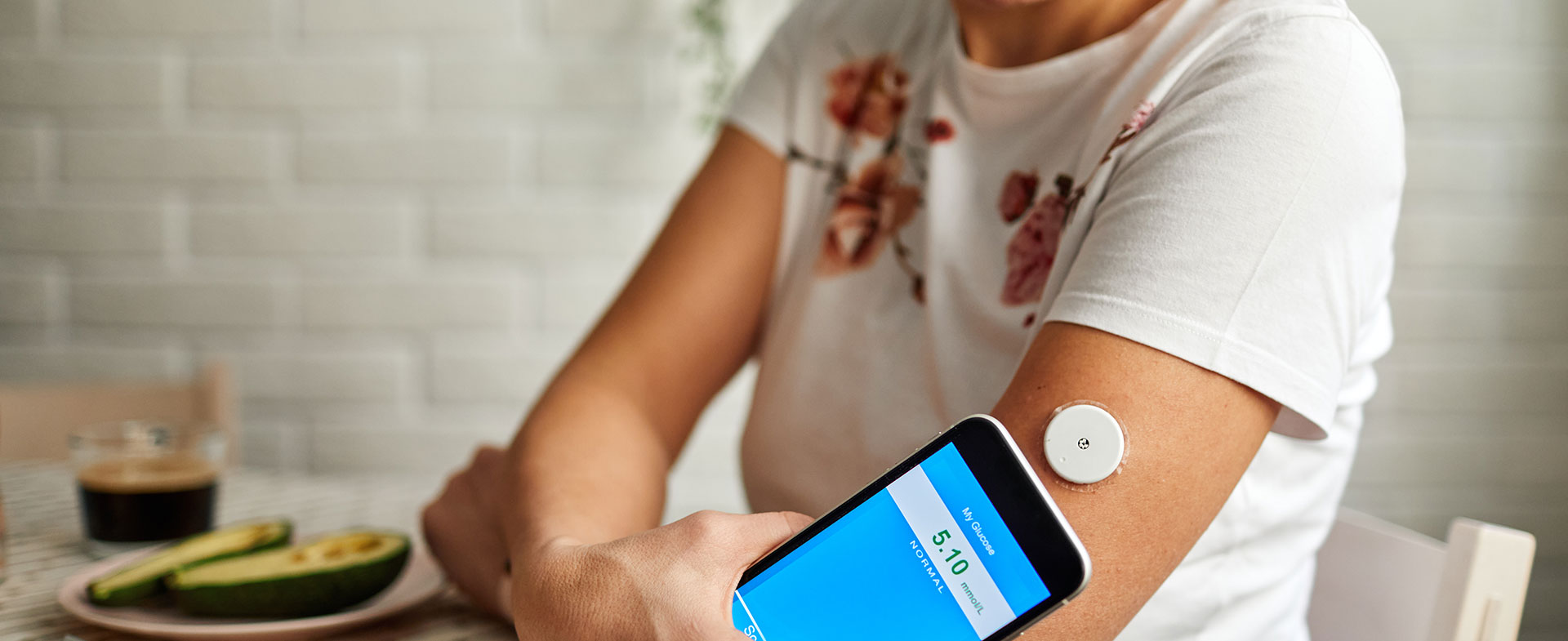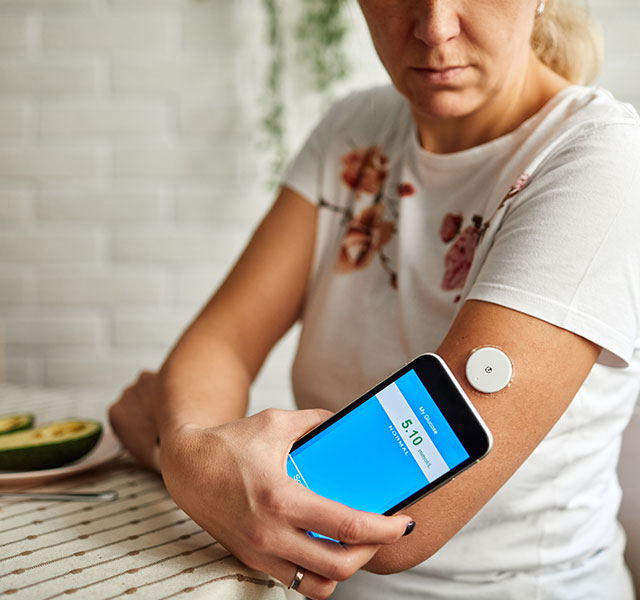Finger pricks, insulin injections and more: diabetes is a condition that requires constant vigilance. To manage it effectively, you have to be proactive at all times. But now, instead of doing it all yourself, there are new devices that can do the hard work for you.
“Technology in diabetes has come so far in the last 5 to 10 years,” says Arti Bhan, M.D., division head of endocrinology at Henry Ford Health. “Smart devices are making it easier for people to regulate and keep their blood sugar levels in check.”
Here, Dr. Bhan shares three devices that are making waves in diabetes management.
A glucose monitoring device that doesn’t require a finger prick.
Historically, monitoring your blood sugar levels throughout the day required pricking your finger each time to test your blood. But the continuous glucose monitor, which is a small patch that you stick to the back of your arm, regularly monitors glucose levels throughout the day and night.
“It’s helpful not only because you don’t have to remember to test your blood sugar frequently, but it also keeps track of each reading so you can review the data and look for patterns in your glucose levels, which can further guide therapy,” says Dr. Bhan.
An artificial pancreas (or closed-loop system) that automatically delivers insulin.
Perhaps one step up from the continuous glucose monitor is the closed-loop system, which is made up of two different devices. The first is an insulin pump that’s worn outside of the body (it can hook onto your jeans or a belt) and is attached to a thin tube with a soft needle that delivers insulin into the body. (This tube should be replaced every 2 to 3 days.)
The second device is the truly innovative part: the pump is paired with a continuous glucose sensor and they work in conjunction to keep glucose levels steady. The sensor monitors blood glucose and transmits the information to the pump, which then delivers insulin based on an algorithm.
“The most feared side effect of insulin is low blood glucose, and this pump automatically turns off insulin delivery before glucose gets low,” says Dr. Bhan. “This is a tremendous safety feature for patients and provides peace of mind, especially for parents who are caring for young children with diabetes.”
Data is constantly uploaded and accessible on your smart phone and can be shared with friends and family, which is another layer of innovation, providing support for parents monitoring their children.
An insulin pen, used to inject insulin, that’s smart: it records data and reminds you to take insulin.
“Smart pens are programmed to deliver insulin based on glucose readings and carbohydrate counts,” says Dr. Bhan. “The pens calculate insulin doses for patients and reminds them to take injections.”
The new smart pens are also paired with glucose sensors, which makes it easy for patients—and doctors—to look at their data and make changes to their regimen.
“Since all of the information is recorded, when the patient comes to the doctor’s office, we can print the data saved in the pen and analyze it. We can point out times that patients forgot to take their insulin injections,” says Dr. Bhan. “We used to go off patient memory, but these newer smart pens track everything. There is so much in diabetes technology--ask your physician what is right for you.”
To book an appointment with a Henry Ford diabetes specialist, visit henryford.com/services/diabetes.
Dr. Arti Bhan is the division head of endocrinology for Henry Ford Health and sees patients for diabetes, thyroid disorders and other conditions at Henry Ford Medical Centers in Detroit and Novi.



